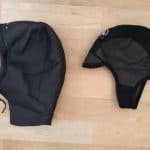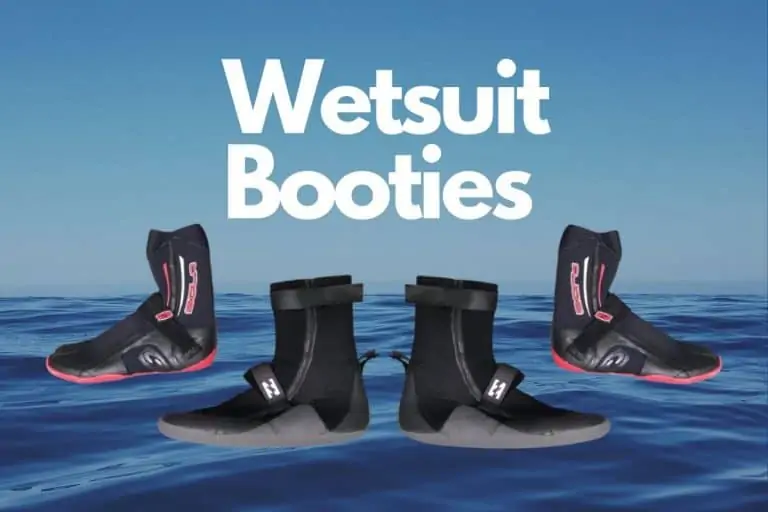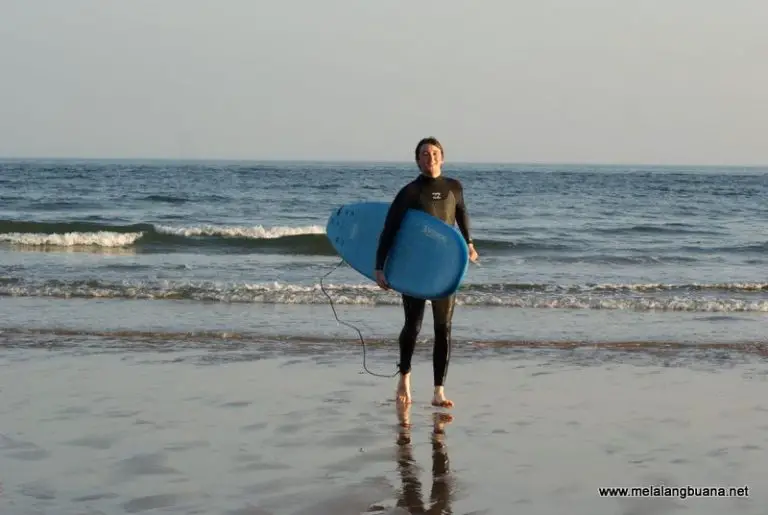Surfing in Freezing Water: Survival Guide for Cold Waves
Surfing in tropical waters on sandy beaches under warm skies is the dream for most. However, the reality for many is that of cold water and surfing in heavy thick wetsuits.
Surfing in colder waters comes with challenges and questions on how to make the most out of it and still have fun.

Photo Credit: Keith Luke on Unsplash
So how do you surf in freezing water?
Get yourself an excellent wetsuit, 5mm thickness, with new accessories like hood, gloves and boots. Top up with thermal layers and warm up before you hit the surf.
Also, have a positive mindset and you will have the best session that you can have, as we’ll explain in more detail below in this post.
So that’s the introduction done. Now let’s have a look in a bit more detail at each of these points below.
Best Wetsuit.
If you’re planning to surf freezing water, you need to get the best available wetsuit with taped seams and polypropylene thermal lining to make this enjoyable. A budget wetsuit will have problems with mobility and warmth.
Cheaper wetsuits are not as flexible and you get cold because wetsuits are high-end technical piece of gear. If you do not have the right wetsuit, you will get cold no matter what you do when surfing in cold water for a long time.
To get the best wetsuit for surfing in cold or freezing water, choose a chest zip wetsuit with hood attachment. That way, you will always have the hood ready to put it on or take it off as needed. Although you will probably want it on most of the time.
Why is chest zip wetsuit excellent for coldwater surfing?
A chest zip wetsuit is excellent because it reduces the flush because you have a zip that is shorter than a back zip wetsuit. There is less potential for water to get in and get cold.
Also, when you’re duck diving under waves, water doesn’t go through the chest zip as it would with a back zip wetsuit.
Why is back zip wetsuit not recommended for surfing?
Back zip wetsuits weakness is that they open up around the nape. When you duck dive, cold water flushes through and you get a chill down your spine, a spine tingling experience. It is something you want to avoid.
Pay the extra and get a chest zip wetsuit with hood attachment. The more expensive your wetsuit the warmer it is. If you use it like me, don’t expect any five millimetre thickness wetsuit to last more than two or three years.
Wetsuits like this are heavy when filled with water, they get twice as heavy. After many uses, stretching them out constantly, they lose some of their waterproofness. They let in a lot more water and quickly develop holes.
And so every wetsuit, for winter waters or really cold temperatures, has a limited shelf life. Expect to buy a new one every two years. So balance that with the use you will get out of it.
Bonus Tip For Buying A Wetsuit For Really Cold Water!
As an extra tip from a friend many years ago, always buy a wetsuit from a brand that is originally from a cold water area. You know, if these come from this area, then they are made for cold water surfers.
Not like the ones that are from warmer waters and they’ve tried to develop thicker wetsuits. Go for ones that are from the hardcore areas. If you’re looking across the world, then take look at this wetsuits:
- Xcel or O’Neill both of which are from Santa Cruz in Nothern California.
- Rip Curl as well from a cooler water part of Australia.
- Billabong and Quicksilver wetsuits are from the same place, but they don’t seem to be made as well.
- Patagonia for a more sustainable, quite premium priced but will be very warm.
Have A Short Session In Freezing Water
You might not need me to tell you this, but surfing for a long time in really cold water will give you the chills very easily. With this in mind, plan for short sessions but go as intense as you can while you are there.
In warmer waters, you might surf for two to three hours but in freezing water, you might want to only surf for an hour a half max. You will start to get the chills in a big way later on and quality of your movement will be so much less.
With this in mind, if you plan for a very short session, keep it intense. You can get as many waves as you would in a longer session and get as much out of it but without feeling the effects of the cold as much.
Yes, you might have to take it a bit easier if there’s a crowd, but generally speaking, you can really cram in a lot in an hour. If you have that mindset and you do everything else on this list before getting in the surf.
Hit the Water Hot
Before you surfing in freezing water, get yourself properly warmed up. I don’t mean just a little bit, I mean almost breaking a sweat. This will not only make your flexibility much better but less of a shock when you hit the cold water.
Now you can do things like perhaps jump rope. It’s really good because you can do that even in the car park with your wetsuit if you feel so inclined. You also can do it at your house before you drove to the beach.
Other things you can do is just to run it up and down the beach. Do a quick dynamic stretching that gets your heart rate up, something that really does warm you up. You’re going to feel so much better when you hit the surf.
It’s really helpful because it makes you, as I said, more flexible and warmer. There’s nothing worse getting into the surf feeling cold. If your core temperature starts low, it will only get lower.
Always Stay Active
If it starts fairly high combined with the earlier points , then you can maintain that core temperature. It’s not as much of a downer when you get in there and you’ll be really excited. On top of that, always try to stay active.
When you plan the short session, keep paddling around and do everything to stay active. By keeping warmth up, you should be fine and have one of the better surfs out of anyone in the lineup.
I say all this based on experience from growing up learning to surf in very cold waters where I’m from. Just thinking about surfing without much thought and not being warmed up, you will really suffer for it and have a miserable session.
So take my advice, get that warm up going and have much more fun out in the cold surf.
Think Thermals
Get yourself as many thermal underlayers to go under your wet suit as this will maximise your warmth. It is true that having these layers will reduce some of your flexibility. Provided you get the right ones, it won’t be a problem.
Thermal underlayers, like a vest is an excellent option because the vest keeps your core warm around your chest. It doesn’t have arms, it means it doesn’t restrict your movement for paddling.
Now you might think, but I need my warmth in my arms. Arms don’t lose heat in the same way as your core. Wear that thermal vest under there to keep your body core warm, while also maintaining paddling flexibility.
I would also recommend getting thermal shorts to go under your wetsuit in cold water. They are way better than going commando and they really help with the warmth in the nether regions. They’re great to have, not too expensive, you can get them for around 20 to $30 for a pair.
You may find if you have a brand new winter wetsuit, the first session or the first season you use it, you don’t need thermals underneath. But by year two, you will probably need to add these thermals to make up for any loss in heat.
So bear that in mind, even if you feel warm the first year, you’ll probably feel a bit colder the second year of using your winter wetsuit. So consider the thermals there.
As an extra tip, if you go for a wetsuit without hood attachment, you can get a thermal hooded vest. It’s highly recommended because they connect the hood to interior thermal layer so you get no water flushing down your back.
A nice thing to have if you didn’t go for the hooded wetsuit, so just bear that in mind, as well.
Be Realistic, You Are Not In Hawaii Remember.
In this case, remembering that you are not surfing in tropical waters in board shorts can help you. I know I’ve always struggled coming home from holiday to cold water and wanting to do the same.
The reality is that your wetsuit weighs a lot more, and cold water is much more draining on you physically. You just can’t do the same moves as you would in tropical waters. You can still do turns and ride waves, but it’s not as effortless.
In fact, I actually weighed my wetsuit and gears when they were wet. It was an extra 11 pounds on your body when you’re riding. Compare to board shorts and rash vest, rash guard, or wetsuit top, you’re looking at one pound.
It’s a completely different experience but if you keep those expectations in line, you’ll still have fun. Challenge yourself by thinking about the different moves you can do in cold water or at least the kind of stuff to practise.
However, don’t think about trying to do airs and your most radical surfing. It’s probably not going to happen. Without sounding like a pessimist, but it’s more, if you have realistic expectation, your session will be much better.
Max Out On The Fun.
Of course, surfing in cold water or freezing water is a challenge. Yet, you can still have a heck of a lot of fun.
Getting changed in the car park can be cold, but a good laugh. You can have lots of fun joking around with friends, trying to get warm. You can also have far fewer people in the surf.
Crowded lineups aren’t such an issue, you can check out my detailed article on surfing in crowded lineups here. You’d also probably get more waves because of fewer people in the water, making for more memories and improvement.
Surfing in freezing water can really be a great experience if you embrace it and go with the right mindset. It’s just a great time to be surfing so remember that and enjoy every minute of it.
Get Strategic About Changing
Changing in cold areas is actually a bit of a military operation. Being strategic and getting some of the right gear, you can make it much better for yourself.
Now we’ve mentioned above, getting thermal layers. These really help, even if you have a cold or wet wetsuit rather. They take some of that wet layer off your skin surface when you’re getting in, reducing the shock of a wet wetsuit.
You can also think about changing in your house before you leave if you live close enough to the surf. Get yourself waterproof car seat covers, and put on proper shoes as it might be illegal to drive with wetsuit booties , depending on where you are.
Changing in the parking lot can actually sap your energy. If you are not as lucky, try to change quickly and keep your feet off the ground. The ground will get the cold into your feet and lower your temperature quite quickly.
Put down a board bag or changing mat to keep your feet off the ground. If they get cold, you’re going to feel that core temperature dropping. You will feel the cold more quickly getting into the surf and have that negative experience.
Get Inspired
There are some really good cold water surfing documentaries online that you can check out for inspiration.

If you want a mockumentary of two British surfers surfing in Iceland, check out YouTube video below. Otherwise, check out the US pro surfers heading to Iceland on Netflix film Under An Arctic Sky where they get amazing waves.
Another really nice but more underground one that I’ve seen and recommend is called North of the Sun. It’s about two Norwegian guys who camped out in the north of Norway for the winter.
Surfing a little beach to themselves, lots of waves, they even made the hut from driftwood and so on, on the beach. Again, pretty hardcore, but really good watch.
So those are the best cold water surfing documentaries out there at the moment.
Related Questions
What are the benefits of cold water surfing? Cold water surfing is also incredibly good for your circulation and therefore health. Although it is harder, you will also be better and find it much easier surfing in warmer water.
There are other benefits but those are the main ones and generally the goal is to have fun wherever you go surfing. So definitely get in there and make the most of it. Surfing with fewer people means getting more waves.
How to wear a wetsuit hood? Make sure it is tight enough that it won’t let in too much water but allows you to move comfortably without causing pain to your jaw or restricting breathing. Also, tuck it into the neck of your wet suit.
A better version is to get a hooded thermal vest to go under your wet suit so you don’t have that problem. You can get a wetsuit hood attachment but these can balloon up with water when duck diving if you’re not using them.





